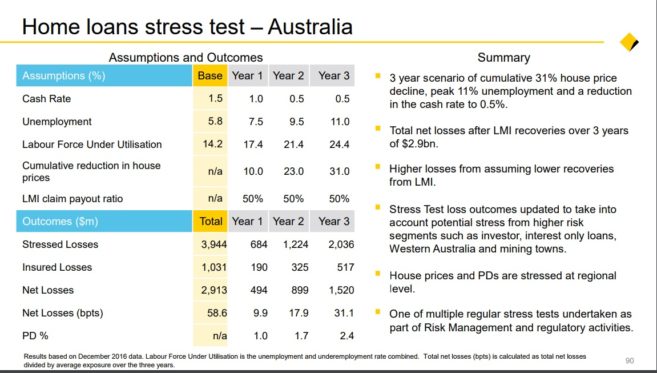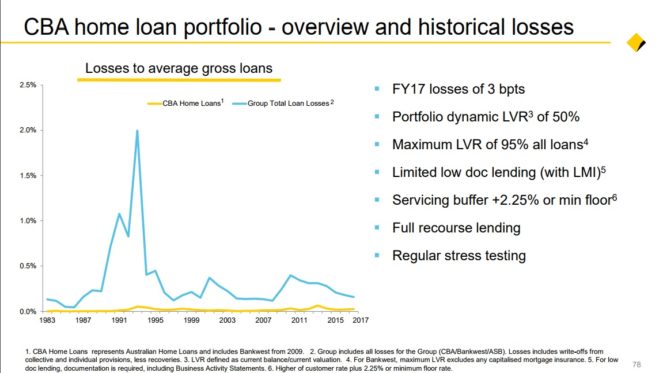In yesterday's results release from Commonwealth Bank of Australia (ASX: CBA), I thought there was an interesting slide in the accompanying analyst pack that could be worth highlighting further for investors.
It's a stress test that the bank conducts, modelling the effects of a housing crash :

The chart largely speaks for itself, but it assumes that unemployment climbs to 11%, house prices fall 30%, and half of all claims are repaid via lenders mortgage insurance (LMI). In this scenario, Commonwealth would incur $3.94 billion in losses, or $2.91 billion after insurance.
That's approximately 1/3rd of one year's profit or a trifling percentage of the bank's $53 billion in Tier 1 capital (financial assets intended to absorb losses).
I couldn't speak with any authority on the model as it is outside my area of expertise. Still, it is worth bearing in mind that models typically are poor at forecasting real-world outcomes because the behaviours of populations change in myriad ways when an event like this occurs.
It's also interesting to note that losses in the above scenario are very modest, with just 58.6 basis points forecast. That is, if 11% of the population became unemployed, Commonwealth Bank, Australia's largest lender, would only report 0.586% losses on its loans. Only 2.4% of borrowers would have a probability of default (PD). Compare here with the losses recorded during our last recession:

Along with the other banks like Westpac Banking Corp (ASX: WBC), Australia and New Zealand Banking Group (ASX: ANZ), and National Australia Bank Ltd. (ASX: NAB), Commonwealth now has more stringent loan requirements and maintains a 2.25% servicing buffer on interest rates for all its borrowers. That is, if a loan is at 5%, borrowers must be able to meet repayments if interest rates were 7.25%. If the above scenario is accurate, Commonwealth Bank could be better positioned for a downturn than many might think.








